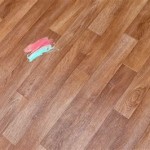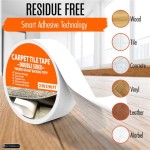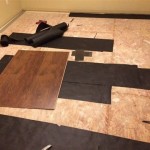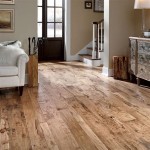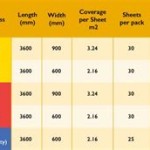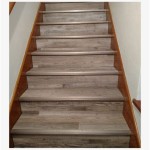Is Vinyl Plank Flooring Safe For Stairs? A Comprehensive Guide
Vinyl plank flooring has surged in popularity as a durable, affordable, and aesthetically versatile option for homeowners. Its water resistance, ease of installation, and wide array of styles mimicking hardwood, tile, and stone have made it a favored choice for various areas within a home. However, when considering vinyl plank, particularly luxury vinyl plank (LVP) or waterproof vinyl plank (WVP), the question of its suitability and safety for staircases often arises. This article delves into the aspects of using vinyl plank on stairs, addressing safety concerns, installation considerations, and potential drawbacks to provide a comprehensive understanding of the topic.
The primary concern surrounding vinyl plank on stairs revolves around safety. Staircases inherently pose risks due to the potential for slips and falls. The flooring material used must provide adequate traction and stability to minimize these risks. Furthermore, the installation method must ensure a secure and lasting application to prevent detachment or shifting, which could create tripping hazards. Compliance with building codes and safety standards is also a crucial factor to consider.
Key Point 1: Safety Considerations and Slip Resistance
The safety of vinyl plank flooring on stairs hinges primarily on its slip resistance. This characteristic is measured using a coefficient of friction (COF). A higher COF indicates greater slip resistance. Building codes often specify minimum COF values for walking surfaces, including stairs. It's essential to check local building regulations to ensure the chosen vinyl plank flooring meets these requirements.
Not all vinyl plank flooring offers the same level of slip resistance. The surface texture and finish play a significant role. Embossed or textured vinyl plank typically provides better grip than smooth, glossy surfaces. When selecting vinyl plank for stairs, prioritize products specifically designed for high-traffic areas and advertised as slip-resistant. Review the manufacturer's specifications and product data sheets to confirm the COF rating. Consider requesting samples to test the slip resistance with various footwear in different conditions (dry and potentially wet) to assess its suitability.
Installing stair treads or nosing with enhanced traction is another method to improve safety. These accessories often feature a textured surface or integrated rubber inserts to increase grip at the edge of each step. The combination of slip-resistant vinyl plank and appropriate stair treads significantly reduces the risk of slips and falls on staircases.
Furthermore, ensure adequate lighting on the staircase. Poor visibility contributes to accidents, so well-placed lighting fixtures can enhance safety by illuminating each step clearly. Adding handrails is also a critical safety measure, providing support and stability for those ascending or descending the stairs. Regular cleaning of the staircase is also crucial, preventing the build-up of dust, dirt, or spills that could reduce traction and increase the likelihood of slips.
Key Point 2: Installation Methods and Stability
Proper installation is paramount to the safety and longevity of vinyl plank flooring on stairs. Incorrect installation can lead to loose planks, uneven surfaces, and potential tripping hazards. The recommended installation method depends on the type of vinyl plank (click-lock, glue-down) and the structure of the staircase.
For click-lock vinyl plank, a common approach involves using stair treads specifically designed for use with this type of flooring. These treads are typically pre-cut to the appropriate dimensions and feature a locking mechanism that integrates with the vinyl plank. Starting from the top of the staircase, each tread is secured to the underlying stair structure, ensuring a tight and seamless fit. Adhesives may also be used to provide additional stability, particularly on high-traffic stairs.
Glue-down vinyl plank requires a different installation process. The subfloor must be clean, level, and dry before applying a suitable adhesive recommended by the vinyl plank manufacturer. Each plank is carefully positioned and pressed firmly into the adhesive, ensuring full contact and proper adhesion. Accuracy is crucial to avoid gaps or overlaps, which could create uneven surfaces and potential tripping hazards. The adhesive must be allowed to cure fully before using the staircase.
Regardless of the installation method, using stair nosing is essential. Stair nosing is a molding that covers the edge of each step, providing a finished look and protecting the edge of the vinyl plank from wear and tear. It also enhances safety by creating a more visible and defined edge to prevent missteps. Stair nosing should be securely attached using adhesive and fasteners to ensure it remains in place over time. Professional installation is often recommended for stairs due to the complexity and precision required to ensure a safe and durable outcome.
Maintaining a stable and level subfloor is also vital. Unevenness or imperfections in the subfloor can compromise the stability of the vinyl plank and lead to premature wear or detachment. Before installing any vinyl plank, thoroughly inspect the subfloor and address any issues such as cracks, warping, or loose boards. Self-leveling compounds can be used to create a smooth and even surface for the vinyl plank to adhere to.
Key Point 3: Potential Drawbacks and Considerations
While vinyl plank flooring offers several advantages for use on stairs, certain drawbacks and considerations should be addressed. One potential issue is the wear and tear that stairs endure. Stairs are high-traffic areas subject to frequent use and potential impacts. While vinyl plank is generally durable, it is not impervious to damage. Scratches, dents, and gouges can occur, particularly with lower-quality vinyl plank or in homes with pets. Choosing a vinyl plank with a thicker wear layer and a robust construction can help mitigate this risk.
Another consideration is the potential for color fading over time. Prolonged exposure to sunlight can cause some vinyl plank flooring to fade or discolor. This is particularly noticeable on staircases that receive direct sunlight. Selecting vinyl plank with UV protection can help minimize fading and maintain the appearance of the flooring over time. Window treatments such as blinds or curtains can also help reduce sunlight exposure.
Furthermore, repairing damaged vinyl plank on stairs can be challenging. Replacing a single damaged plank often requires removing adjacent planks, which can be time-consuming and potentially disrupt the surrounding flooring. Maintaining a supply of extra vinyl planks from the initial installation is advisable for future repairs. Consider the complexity of the staircase design. Intricate designs with curved steps or multiple landings may pose installation challenges and increase the cost of labor.
The cost of installing vinyl plank on stairs can also be a significant factor. While vinyl plank flooring is generally more affordable than hardwood or tile, the cost of installation on stairs can be higher due to the labor involved. Professional installation ensures proper alignment, secure attachment, and a finished look, but it comes at an added expense. Obtain quotes from multiple contractors to compare pricing and ensure transparency in the estimated costs.
Finally, consider the overall aesthetic and design of the staircase. While vinyl plank can mimic the appearance of wood or tile, it may not offer the same level of visual appeal as natural materials. Some homeowners may prefer the look and feel of genuine hardwood or stone on their stairs. Evaluate the aesthetic impact of vinyl plank on the overall design of the home and consider alternatives if necessary. The texture and color of the vinyl plank should complement the surrounding decor and create a cohesive look. Integrating stair runners or area rugs can enhance the aesthetic appeal and add a layer of comfort and safety to the staircase.
Therefore, while vinyl plank flooring can be a viable option for staircases, careful consideration must be given to safety, installation, potential drawbacks, and aesthetic preferences. Selecting the right product, ensuring proper installation, and implementing additional safety measures are essential to create a safe, durable, and visually appealing staircase.

Luxury Vinyl Tile Seamless Upstairs And Downstairs Solution

Pros And Cons Of Installing Vinyl Flooring On Stairs

Pros And Cons Of Installing Vinyl Flooring On Stairs

An Expert Guide To Vinyl Plank Flooring For Stairs Direct Blog

Is Wood Flooring Safe To Use On Stairs Floor Land

Pros And Cons Of Installing Vinyl Flooring On Stairs Lx Hausys

Vinyl Plank Flooring Stairs Diy Training Center

How To Choose Flooring For Stairs

Lvp Stair Treads Ideas

Can You Install Luxury Vinyl Plank On Stairs
See Also
